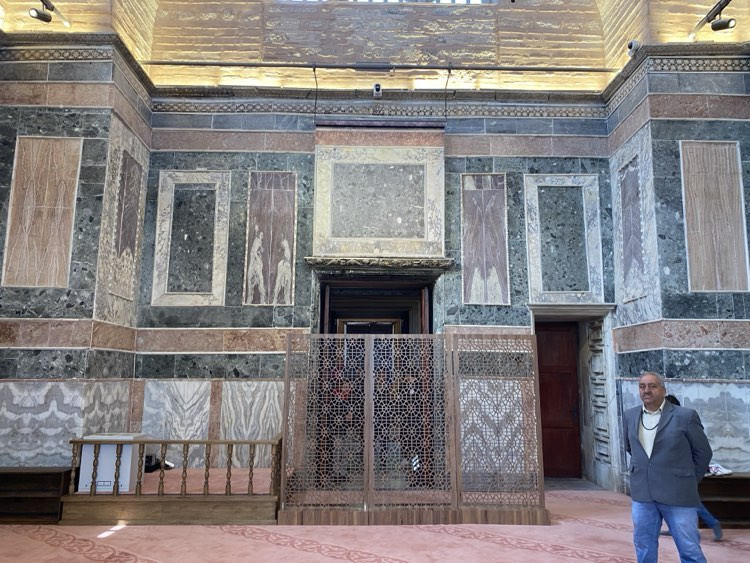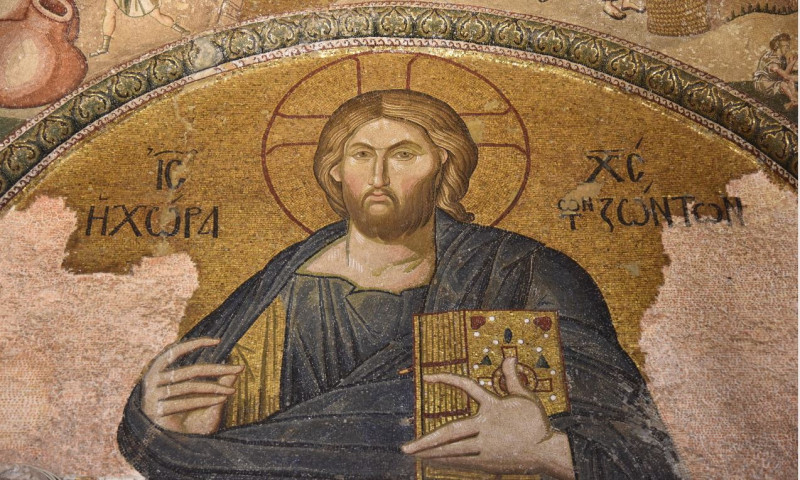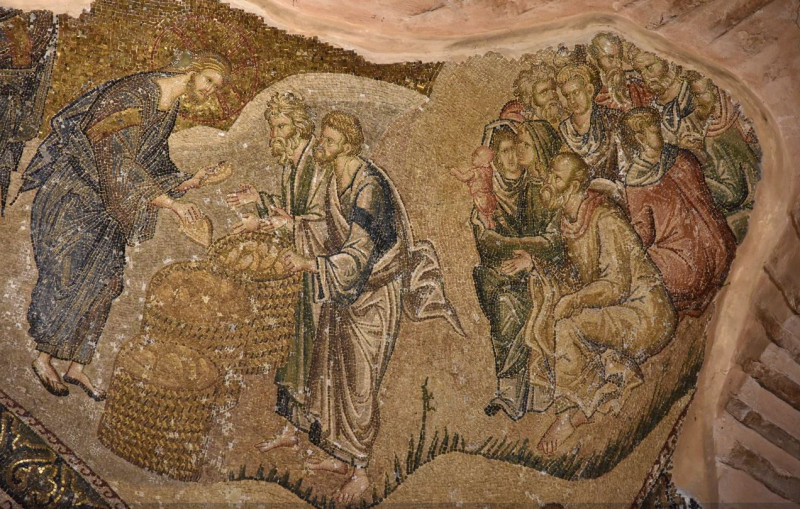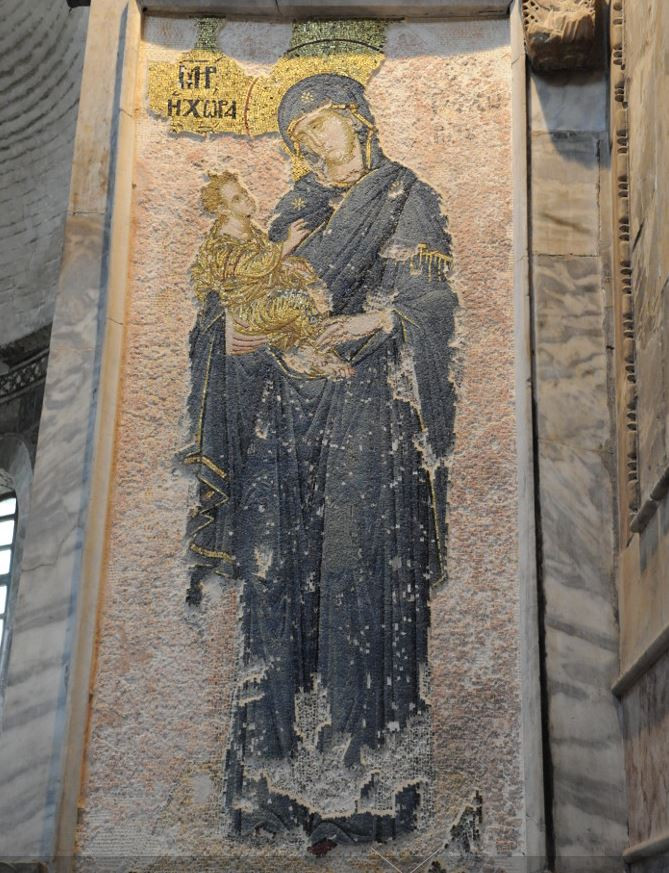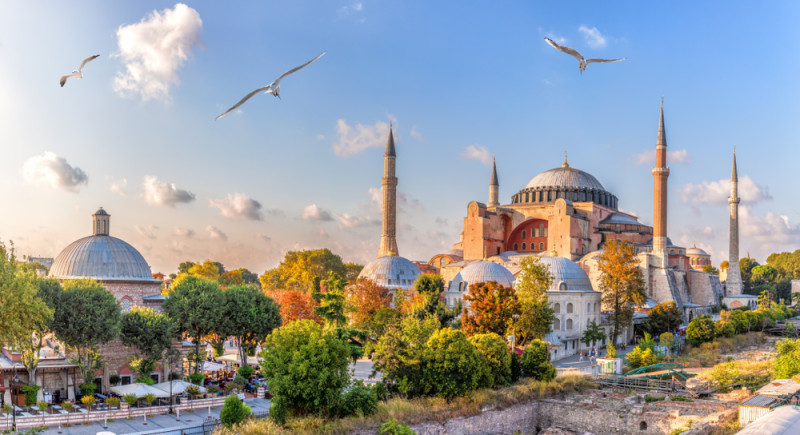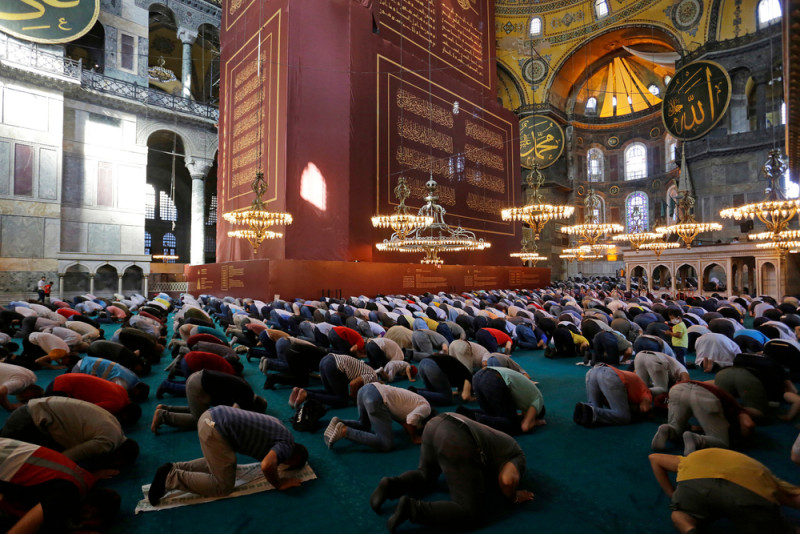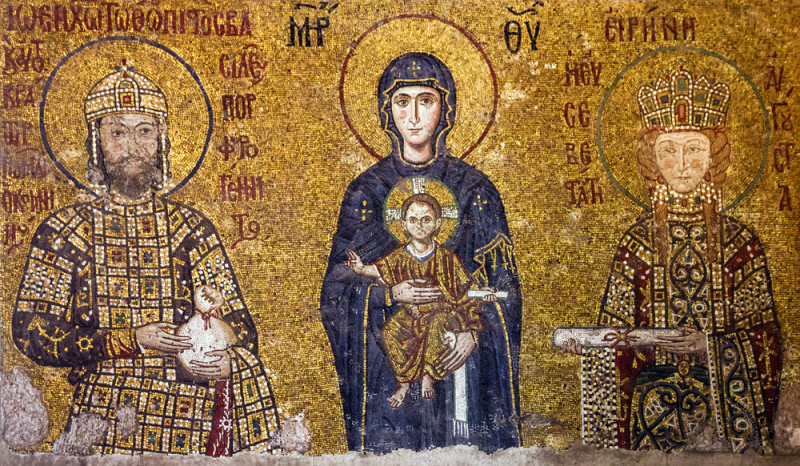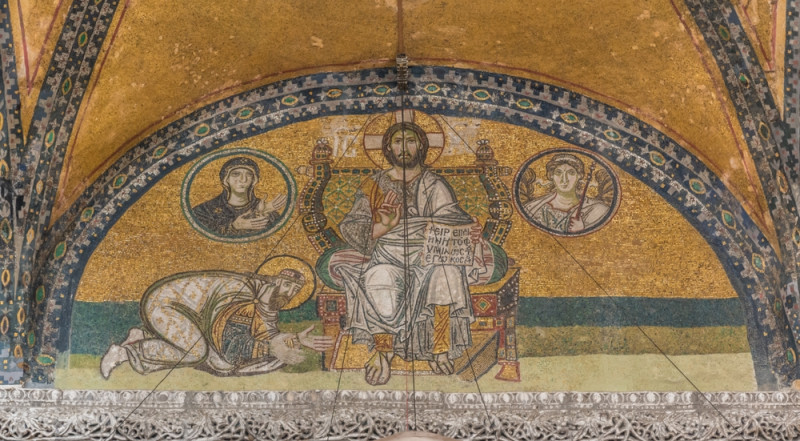Mrs. Natalia Poulos, Professor of Byzantine Archeology at AUTH and President of the Board of the European Center for Byzantine and Post-Byzantine Monuments, talks about this unique monument on skai.gr
By Marina Zioziou
The conversion of the Monastery of Chora into a mosque, the operation of which was inaugurated on the eve of Mr. Mitsotakis’ visit to Turkey, was severely criticized by ministers and commentators. Mr. Mitsotakis referred to the issue in his discussion with Mr. Erdogan and in the statements that followed he expressed his satisfaction that the Monastery of Chora – as a mosque – will be open to non-religious visitors. Anyway, that’s what happens after the conversion of Hagia Sophia into an Islamic mosque. This is what UNESCO is also interested in.
His belief that the Turkish side will re-evaluate the conversion of the Monastery of Chora into a mosque, after the visit of the Greek Prime Minister to Ankara, was also expressed by the Minister of Foreign Affairs, Giorgos Gerapetritis, answering a topical question in the Parliament a few days ago.
The Permanent Holy Synod also took a position on the issue, citing characteristics: “We express our strong displeasure and concern over the decision of the government of Turkey to convert, after the Hagia Sophia of Nicaea, the Hagia Sophia of Trebizond and the Hagia Sophia of Constantinople, and the historical Christian monument in question, from a World Heritage Site, to a symbol of enforcement and a point of division and disintegration’.
A unique Byzantine monument
The Monastery of Chora has been the subject of study for many European travelers as well as scholars of Byzantine archeology and art. According to Mrs. Natalia Poulos, Professor of Byzantine Archeology AUTH and President of the Board of the European Center for Byzantine and Post-Byzantine Monumentsthe Chora Monastery was one of the most important Byzantine monasteries of Constantinople and one of the best preserved religious monuments.
As Mrs. Poulos reports on skai.gr, “it was a royal monastery, supported by the imperial court throughout its history. The monument has a long history, although it is best known mainly for the construction phase dating back to the 14th century. The building we see today is the result of the building phases of the late 11th, early 12th and 14th centuries.”.
According to the professor, although it was previously thought that the first phase of the monument dates back to the early Byzantine period, research by PA Underwood showed that the temple was built between 1077 and 1081 by the mother-in-law of Alexios I Comnenus (1081-1118) Maria Doukaina, on older buildings of the 6th and 9th centuries. The early 12th century reconstruction is associated with Sebastocrator Isaac Komnenos, grandson of Maria Doukaina in 1118. Perhaps the building was partially destroyed in the period 1204-1261.
“The 14th century is considered to be the Golden Age of the monument. The current form of its architecture and monumental decoration is from the time of Theodoros Metohitis. Metohitis, who is the sponsor for the reconstruction of the temple and the formation of the interior decoration as we see it today, was the Logothetist of the General (1315-1321) of the emperor Andronikos II Palaiologos. This phase includes the addition of the exonarthex, the construction of a side chapel on the south side of the monastery’s katholikon for burial use and the decoration of the katholikon with mosaics and the chapel with frescoes. Its decoration is one of the most important examples of the Palaeologian Renaissance of the first quarter of the 14th century. Today the mosaics in the inner narthex, the outer narthex and few subjects in the temple are preserved. The chapel preserves its wall decoration (murals) intact,” emphasizes Mrs. Natalia Poulos.
Modern interest in the Monastery of Chora has focused almost exclusively on the mosaics and frescoes that adorn the interior of the temple. The restoration work and works of restoration of the monumental decoration, accompanied by some limited scope excavations, carried out between 1947-1959 by the American Archaeological Institute led to the fundamental and valuable edition of his three-volume monograph Paul Atkins Underwood, “The Kariye Djami” (1966). Then the American professor Robert Ousterhout will publish his study (subject of his doctoral thesis) on the architecture of the Monastery of Chora (1987). In his work, the older phases of the monument are studied, while the morphology of the building is highlighted.
“Despite the monastic use of the Country, the character of its pictorial programs offers itself as a rare Byzantine example of scholasticism, which flourished in Italy during the 14th century. It is true that the main characteristic of Chora is the dialectical content of its decoration, dictated by a rational and complex consideration, apparently under the direct supervision of its astronomer and scholar founder, Theodoros Metohitis.
The European Center for Byzantine and Post-Byzantine Monuments (EKBMM), immediately after the decision to convert the monument from a museum to a mosque in the summer of 2020, decided to hold an International Scientific Symposium on the Monastery of Chora in Istanbul entitled “Re(dis)covering Chora: The Byzantine Name of the Rose”.
The hybrid symposium, held in November 2021, was attended by distinguished Byzantine scholars from Greece and abroad (France, Italy, Russia, Turkey, the United States), who once again demonstrated to the international scientific community the great importance of the monument”adds the Professor of Byzantine Archeology AUTH and President of the Board of the European Byzantine Center.
It will function like Hagia Sophia
The mosque will function on the model of Hagia Sophia. The mosaics on the walls in the prayer area were covered, while an area was determined to be visited by tourists with a guide.
Agia Sophia lies on the neck of the peninsula, where it was the administrative and religious center of the city since the days of ancient Byzantium, on the slope of the first hill towards Propontida. In the Byzantium years – as it is today – it was adjacent to the north with Agia Irini, with which in a common precinct they formed the Great Church. Only Samson’s inn separated them.
As he writes Christoforos Sofroniou in his book “The Introduction to Hagia Sophia”, Domos publications (2019)“… Hagia Sophia was the cathedral and Hagia Irini is a little older than Hagia Sophia, it also burned down at the stop of Nice, was rebuilt by Justinian and had been, from the pre-Constantine period until 415, an episcopal church of Byzantium.
The Hagia Sophia that we see today and admire, is the third church in a row with the same name and in approximately the same position. They were both formerly splendid edifices and were destroyed by fire.
The first was founded by Constantine the Great, in the second year of his reign in 326 and was named Hagia Sophia, to honor the Word, the second person of the Holy Trinity, the wisdom of God the Father. In fact, the inhabitants at that time used to call her simply Sophia…”.
However, either because the temple was left unfinished or because it was damaged by an earthquake, it was inaugurated again in 360, 34 years after its first foundation, by the emperor Constantius, son and successor of M. Constantine, during the patriarchate of Eudoxius the Arian. It is, in fact, possible that it was then called Agia Sophia, according to the author, while until then it was called the Great Church.
On the twentieth of June 404, during the reign of Arcadius, there was a rebellion of the Johnites or Xylokerkites, who were reacting to the arbitrary exile of Saint John Chrysostom. Then, in the context of the violent incidents, the temple of God Sophia was set on fire. Along with the church, the neighboring building of the Synagogue burned down.
The first Saint Sophia, therefore, is intertwined with the personality of Saint John Chrysostom. From there he delivered his catechistic discourses and educated the people of God. From there, however, he also civilized the unjust state of the emperors Arcadius and Eudoxias and other magnates of the time, and this was also the cause of his fall from the throne and his exile.
It is extremely interesting that this church, the first Hagia Sophia, was also honored by the passing of Saint Gregory the Theologian. As Mr. Sofroniou informs us, “this father, after the death of Wallens the Arian and while the emperor Theodosius was still sojourning in Thessaloniki, was invited to Constantinople, or rather he was blackmailed by the entreaties of the persecuted Orthodox minorities to go there in order to support them against the heretical followers of the Arius, the Macedonius and Apollinarius where they completely dominated. He was still bishop of Sassimon and overseer of Nazianzu. He did not find then a single church in the hands of the Orthodox in the whole city. For a long time he performed the services for his small flock in an intimate home of his relatives. But over time, with the support of Theodosius the Great, and as the pastoral court of his theology, alongside his holy life, converted and re-evangelized the heretics, one after the other the parishes and the corresponding temples of the City placed the flock them under the shoulder of the Holy Father and the roof of Orthodoxy”.
At that time, and before handing over the patriarchate and the presidency of the Second Ecumenical Council to his successor, Saint Nektarios, Saint Gregory, as now Patriarch of Constantinople, should officiate and preach in Hagia Sophia, which was then the seat of the Bishop of Constantinople (while the works of the Second Ecumenical Council took place in Agia Irini).
For about ten years after the uprising – as we mentioned above – the first Hagia Sophia remained half-burnt and in ruins. However, during the reign of Emperor Theodosius II, it was renovated, under the supervision of the master Rufinos, expanded and brightened. And on January 11, 415, the day on which the biennial celebrations for the City’s birthday took place, it was re-inaugurated by the Patriarch Saint Attikos.
This venerable church remained in operation for one hundred and seventeen years. It was associated with holy persons and hosted events of great historical importance. It was established during the reign of Leo I (457 – 474), that the resurrection of the emperors should be done with the blessing of the Church and symbolically their coronation by the Patriarch.
However, in 532, during the reign of Justinian and Theodora of the emperors, it was set on fire along with most of the city. Forty days after the suppression of the Nice stand, namely on February 23, 533, Justinian began the construction of the third Hagia Sophia.
Source :Skai
I am Frederick Tuttle, who works in 247 News Agency as an author and mostly cover entertainment news. I have worked in this industry for 10 years and have gained a lot of experience. I am a very hard worker and always strive to get the best out of my work. I am also very passionate about my work and always try to keep up with the latest news and trends.


